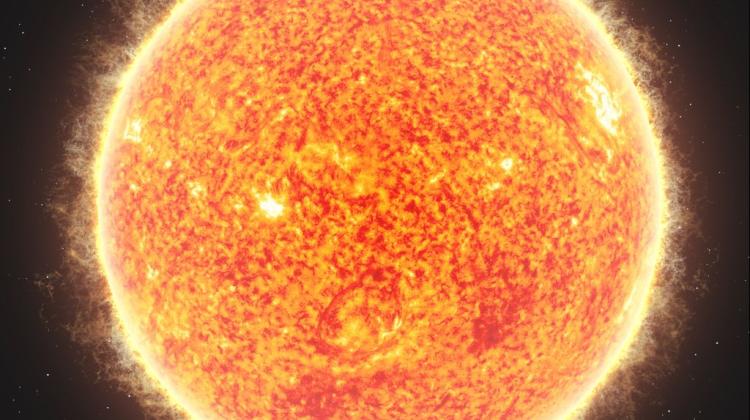Because coronal emission lines indicate the presence of extremely ionized iron.
The solar corona mainly consists of.
Because the solar corona emits mainly in the infrared range.
The tilt of the earth on its axis is a major factor in causing the seasons.
Because coronal emission lines indicate the presence of molecular hydrogen and atomic helium.
Apparent magnitude refers to real luminosity.
A solar flare may cause charged particles to enter the earths atmosphere.
Although the solar corona is a source of extreme ultraviolet and x ray radiation these rays make up only a very small amount of the power output of the sun see spectrum at right.
Photosphere chromosphere corona the atmosphere of the sun is composed of several layers mainly the photosphere the chromosphere and the corona.
The composition of the solar wind is a mixture of materials found in the solar plasma composed of ionized hydrogen electrons and protons with an 8 component of helium alpha particles and trace amounts of heavy ions and atomic nuclei.
It has a temperature of approximately two million kelvins and an extremely low density.
Fusion of hydrogen is the main source of the sun s energy.
The corona is a halo of light around the sun it consist of gases.
These whips of highly charged fast moving plasma are the sun s corona so called because when seen during a solar eclipse they look like the point on a crown.
The corona extends far out into space.
By measuring the speed of the solar wind.
Solar corona corona outermost region of the sun s atmosphere consisting of plasma hot ionized gas.
As the outer corona disperses it must be replaced by gases welling up from below lower corona.
These speeds are so high that the particles can escape the sun s gravity.
Solar corona mainly consist of gases hydrogen and helium and other inert gases but present in very small amount.
As the solar wind cools the corona some matter escapes into space.
From the configuration of the sun s magnetic field.
The corona continually varies in size and shape as it is affected by the sun s magnetic field.
A corona latin for crown in turn derived from ancient greek κορώνη korṓnē garland wreath is an aura of plasma that surrounds the sun and other stars the sun s corona extends millions of kilometres into outer space and is most easily seen during a total solar eclipse but it is also observable with a coronagraph.
Spectroscopy measurements indicate strong ionization in the.
From it comes the solar wind that travels through our solar system.
The spectrum of nearly all solar electromagnetic radiation striking the earth s atmosphere spans a range of 100 nm to about 1 mm 1 000 000 nm.

